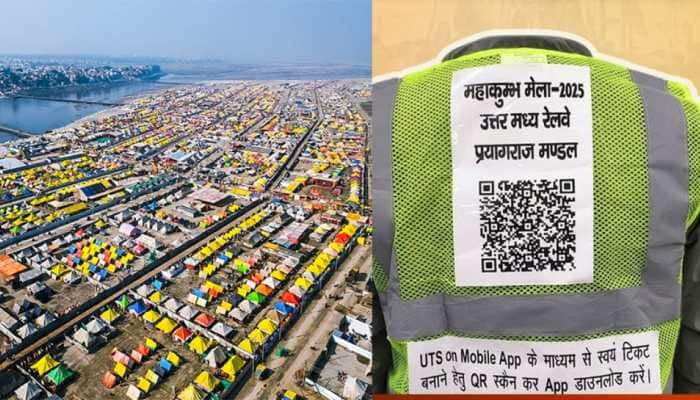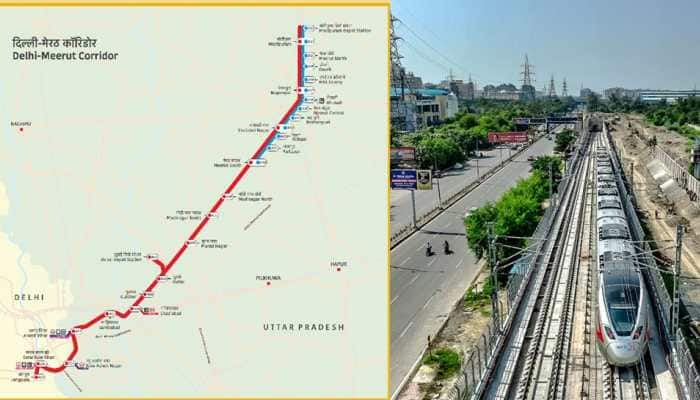Creeping rot in China's 'flourishing' economy; know why
A United Nations statistics project has revealed that in the coming years, China’s workforce will shrink by 6.8%.
- One of the main problems that will start affecting China’s economy as it tries to bounce back is a looming demographic problem.
- While this demographic problem may not impact China soon, this will certainly be a key factor in terms of its long-term growth or lack thereof.
Trending Photos
) Representational Image (Reuters)
Representational Image (Reuters) The COVID-19 pandemic has made 2020 a hard year for everyone. The pandemic that began in China's Wuhan has devastated economies across the globe and claimed millions of lives. Being the first country to be affected by the virus, China claims to have recovered from the ill effects of the pandemic while most of the countries are still struggling. However, while China forecasts to make future gains during the next few quarters, several trends are emerging that may cause the Chinese economy falters and declines.
While the most recent numbers suggest that China’s economy is roaring back after being devastated by the coronavirus outbreak, the Chinese government's statistics (those from official sources) are heavily influenced by political ambitions and narratives.
One of the main problems that will start affecting China’s economy as it tries to bounce back is a looming demographic problem, which is a considerable reduction in China’s workforce. While this demographic problem may not impact China soon, this will certainly be a key factor in terms of its long-term growth or lack thereof.
For the last 40-years China has maintained an amazing rate of growth, this has been primarily on account of its large and ever-growing workforce. As per a Forbes report, China currently has five adults of working age for every American worker. However, numbers are soon to change as there is likely to be a decline in China's workforce.
A United Nations statistics project has revealed that in the coming years, China’s workforce will shrink by 6.8%. This means that the advantage China had over the US in terms of the workforce will likely shrink. The main reason for this sudden decline in the workforce is the fact that for decades, China enforced a draconian one-child policy on its citizens.
Now the eager workers of China, who contributed to the great growth of the country are retiring and China in the coming years will feel an acute shortage of workers. The new generation is neither eager towards CCP’s nationalism, nor is it willing to forego their luxuries for the sake of their nation.
Another fundamental flaw exists that will likely restrict China’s economic growth in the future is its lopsided growth model which focuses heavily on investments and exports. Chinese leadership tried and spectacularly failed to address this problem ten years ago and this failure is likely to cause China to become more debt-ridden than it already is and restrict future growth. In the early years when China was setting out and trying to build its economy, the government focused heavily on exports. This resulted in China building factories and infrastructure that would be used to produce goods for export to the rest of the world.
China’s economy used to be so underdeveloped that this approach gave handsome returns to the country in the latter half of the 20th century and the early years of this century. But this approach has only been effective till now, that is the initial years of growth. Back in 2007, former Chinese Premier Wen Jiabao claimed that the export-investment model that China was following had serious limitations and that the government should start moving away from it.
According to Forbes, back in 2007 consumer spending accounted for 37% of the Chinese economy and exports dominated at a whopping 49%. As per the latest available data, consumer spending is slightly higher at 39%, while exports continue to dominate at 49%. After China was warned, its officials tried to fix China’s lopsided growth model but failed. Their failure prompted them to redouble their efforts into practices that had made China's economy lopsided. They invested more heavily on factories and infrastructure. But unlike earlier when these investment and infrastructure projects brought prosperity to China, these new ones have failed to give back similar returns. Such low-return yielding investments have caused China's debt to rise by 15% in 2020 alone.
Another thing that has held China’s economy back and will likely hamper growth is the highly centralized economic planning of the Chinese government. As China's economy is centrally planned, it is unable to experiment and branch into new fields like more market-driven economies. A centrally planned economic system leans on key focus fields and tends to ignore the rest.
On the contrary, a market-driven economy has much more room for experimentation. While some of these experiments may fail, their losses are more than overshadowed by the experiments that succeed in the long run. In the early stages of development, the path that countries must choose to flourish is clear and simple and focused planning would fetch flourishing results. This is why China’s economic model served it well during its initial years. But during the later stages of growth, the path diverges and the state needs to lessen its economic activities as there are no clear-cut paths. This is why only a few favoured aspects even now will severely harm it.
China, in the future, will also be faced with another wall that will hamper its economic growth, that is a creeping divide between the rural and urban population. In its mad dash to modernize and grow as fast as possible. China has seemingly focused the majority of its efforts on its urban population and seemingly forgotten about the Chinese countryside and its rural population.
The COVID-19 pandemic in 2020 was assumed to be at a great level. The virus seemingly did not discriminate between rich and poor or rural and urban. But the pandemic seems to have affected rural populations more acutely. Rural migrant workers in China were left incredibly vulnerable to the negative economic impact of the virus, especially as they did not have access to the social service schemes provided in big cities. The rural population comprises 40% of China's population and they are increasingly falling behind their urban counterparts without access to government support or job placement services.
As per MERICS, a combination of these factors could cause social friction to rise in China. Due to the effects of the virus, millions of migrant workers have lost their jobs. According to statistics provided by MERICS, nearly 27 million people in China are currently unemployed, this is roughly 5.9% of China's population. However, they are also roughly 60 million unemployed migrant workers who are not counted towards these statistics. If these figures are taken into account, the employment rate in China will increase to 10%. School shutdowns have also impacted rural households much more than urban households. Rural families in China do not have access to modern communication devices and therefore their children have not been able to continue their education online like those in urban areas.
The CCP favours urban educated persons over rural persons. In CCP’s opinion, a university graduate will likely get a higher paying job and therefore contribute much more towards consumption. Another reason the CCP chooses to focus on urban populations is that they are more likely to revolt and cause social unrest if their needs are not met. On the other hand, rural populations are also likely to protest but they are less coordinated and therefore easier for the CCP to shut down. Rural migrants in China still have abysmally low wages that barely cover their living expenses. If there is no change in the way that China approaches its rural population, there is a high possibility that social tensions will rise in the future.
Statistics pertaining to economic growth provided by the CCP suggest that the country will experience a period of economic growth in the next few quarters. However, official statistics are likely inflated by the government in order to cater to their narrative and therefore should always be taken with a grain of salt. In trying to follow the paths that would yield the highest returns. The CCP has done great damage to its economy and society. These damages are slowly creeping up on China and threaten its long term economic health.
Stay informed on all the latest news, real-time breaking news updates, and follow all the important headlines in india news and world News on Zee News.
Live Tv







)
)
)
)
)
)
)
)
)
)
